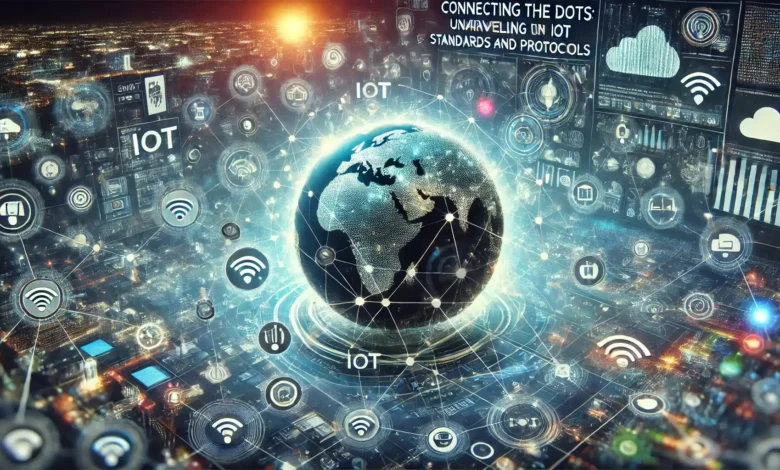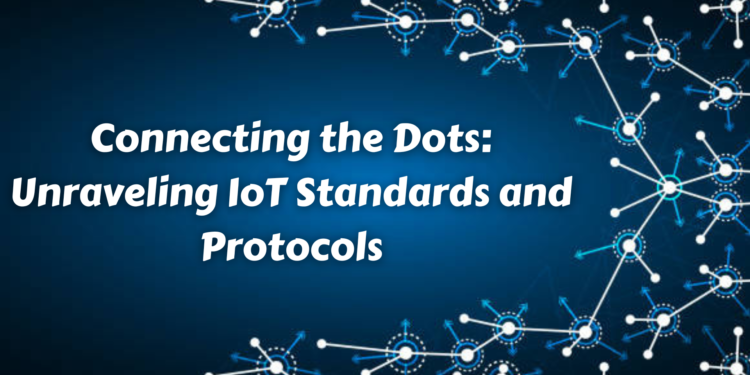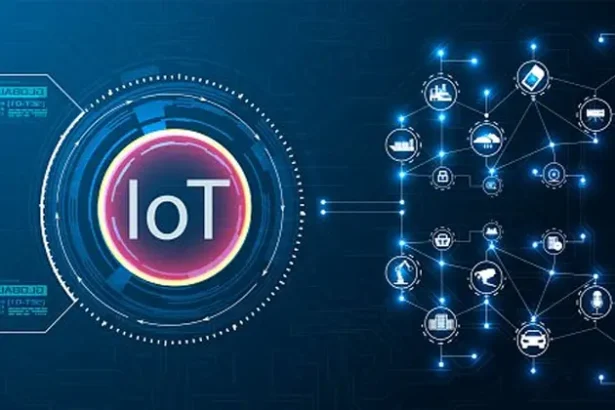Connecting The Dots Unraveling IoT Standards And Protocols: A Comprehensive Guide

The Internet of Things (IoT) is transforming our world. Devices are connecting, sharing data, and improving our lives.
But how do these devices communicate? Understanding IoT standards and protocols is key. These rules and guidelines ensure devices can connect and interact smoothly. Without them, the smart devices we rely on wouldn’t work together. From your smart fridge to industrial machines, IoT standards play a crucial role.
This blog will explore these standards and protocols. We’ll break down the complex terms and concepts. So, let’s dive in and unravel the mystery of IoT communication. Stay with us to connect the dots in the world of IoT.

Credit: techpioneer.co.uk
Key Iot Standards
Understanding the various Key IoT Standards is essential for the seamless integration and interoperability of IoT devices. These standards ensure that devices from different manufacturers can communicate effectively and securely. In this section, we will explore the importance of IoT standards and some of the most popular ones in use today.
Importance Of Standards
IoT standards play a critical role in ensuring device compatibility and secure communication. They help in:
- Enabling seamless communication between devices
- Ensuring data security and privacy
- Facilitating easy integration of new devices
- Promoting innovation through common frameworks
Without these standards, the IoT ecosystem would be fragmented and inefficient. Devices would struggle to work together, leading to a poor user experience.
Popular Iot Standards
Several IoT standards have been developed to address various aspects of device communication and security. Some of the most widely adopted standards include:
| Standard | Description | Use Cases |
|---|---|---|
| MQTT | A lightweight messaging protocol for small sensors and mobile devices, optimized for high-latency networks. | Home automation, health monitoring, remote monitoring |
| CoAP | A protocol designed for constrained devices and low-power networks, allowing for efficient communication. | Smart lighting, environmental monitoring, asset tracking |
| Zigbee | A low-power, wireless mesh network standard designed for IoT applications. | Smart home devices, industrial automation, healthcare |
| Bluetooth LE | A low-energy version of Bluetooth, designed for short-range communication with low power consumption. | Wearable devices, fitness trackers, smart home devices |
| LoRaWAN | A long-range, low-power wireless protocol designed for wide-area networks and IoT applications. | Smart cities, agriculture, asset tracking |
These standards address different needs and use cases, making it possible to build versatile and robust IoT systems. Understanding and adopting the appropriate standards is key to creating a successful IoT deployment.
Iot Communication Protocols
In the world of IoT, communication protocols are the backbone. They enable devices to talk to each other. Understanding these protocols is crucial for building efficient IoT systems. Let’s dive into the various types of IoT communication protocols.
Wired Protocols
Wired protocols are essential for stable and reliable connections. They are used where wireless signals may fail. Ethernet is a common wired protocol. It offers high-speed data transfer. It is widely used in industrial IoT applications. Another example is Modbus. It is ideal for connecting industrial devices.
Wired protocols ensure minimal interference. They provide a secure and constant connection. This makes them suitable for critical applications. They are often preferred in environments with high electrical noise.
Wireless Protocols
Wireless protocols are the heart of IoT. They enable devices to communicate without cables. Wi-Fi is the most popular wireless protocol. It is used in homes and businesses. Wi-Fi offers high data transfer rates. It is easy to set up and use.
Bluetooth is another common wireless protocol. It connects devices over short distances. It is energy-efficient and widely used in wearables. Zigbee is used for low-power, low-data rate applications. It is ideal for smart home devices.
Wireless protocols offer flexibility. They allow devices to be placed anywhere. This makes them suitable for a wide range of applications. They are essential for creating a seamless IoT ecosystem.
Security Protocols In Iot
The Internet of Things (IoT) connects various devices, making our lives easier. But it also opens the door to security threats. To protect these devices, we need strong security protocols. This section explores the common security threats and the protocols designed to counter them.
Common Security Threats
IoT devices face many security threats. Hackers can exploit weak points to gain control. They might steal data or cause system failures. Common threats include:
- Unauthorized access: Hackers can break into devices without permission.
- Data breaches: Sensitive information can be stolen.
- Malware attacks: Malicious software can infect devices.
- Denial of Service (DoS): Hackers can overload systems, causing them to shut down.
Security Protocols Overview
Security protocols protect IoT devices from these threats. They create secure communication channels and ensure data integrity. Here are some key protocols:
- SSL/TLS: Secure Sockets Layer and Transport Layer Security encrypt data during transmission.
- MQTT: This lightweight protocol ensures secure messaging between devices.
- CoAP: Constrained Application Protocol is designed for simple devices and ensures secure data transfer.
- DTLS: Datagram Transport Layer Security secures data for devices using UDP connections.
Implementing these protocols helps protect IoT devices. It ensures they operate safely and securely.
Interoperability Challenges
Interoperability in the Internet of Things (IoT) is crucial. It ensures devices work together seamlessly. But achieving this can be tough. Different devices use different standards and protocols. This causes communication issues. It also limits the full potential of IoT. Understanding interoperability challenges helps solve these problems.
Why Interoperability Matters
Interoperability allows devices to communicate. This makes systems more efficient. It also reduces costs. Devices that work together create a better user experience. They provide more accurate data. This improves decision-making. Interoperability ensures future-proof systems. It allows easy integration of new devices.
Overcoming Interoperability Issues
Standardization is key. Common standards help devices communicate. They also make integration easier. Collaboration between companies is essential. Sharing knowledge leads to better solutions. Testing and certification ensure devices meet standards. This guarantees they can work together. Open-source platforms also help. They provide a common ground for development.
Emerging Iot Standards
The Internet of Things (IoT) is growing fast. New standards are coming to help devices work better together. These standards make it easier to connect different devices and systems. This helps businesses and users get more value from their IoT investments.
New Standards On The Horizon
Several new standards are being developed. These standards aim to improve how IoT devices communicate. Here are some key standards to watch:
- IPv6 over Low-Power Wireless Personal Area Networks (6LoWPAN): This standard allows small devices to connect using IPv6. It helps devices use less power and work more efficiently.
- IEEE 802.11ah: Known as Wi-Fi HaLow, this standard is for low-power, long-range communication. It is perfect for smart homes and large-scale IoT deployments.
- Thread: This is a low-power, secure, and reliable protocol. It is designed for smart home devices and focuses on easy setup and use.
Impact On Iot Ecosystem
The new standards will have a big impact on the IoT ecosystem. Here are some key effects:
- Improved Interoperability: Devices from different manufacturers will work better together. This means more options for consumers and businesses.
- Enhanced Security: New standards come with better security features. This helps protect data and devices from threats.
- Energy Efficiency: Many new standards focus on low power usage. This is important for battery-powered devices and reduces costs.
Overall, these emerging IoT standards will help create a more connected and efficient world.

Credit: blogsternation.co.uk
Case Studies
In this section, we will explore real-world case studies of successful IoT implementations. These examples will highlight both the triumphs and challenges faced by organizations. By examining these cases, we can gain valuable insights into the practical applications of IoT standards and protocols.
Successful Iot Implementations
Let’s look at some successful IoT implementations across various industries. These examples show how companies can leverage IoT technologies to achieve their goals.
| Company | Industry | Outcome |
|---|---|---|
| ABC Corp | Manufacturing | Reduced downtime by 30% |
| XYZ Ltd | Healthcare | Improved patient monitoring |
| HomeSmart | Smart Home | Enhanced energy efficiency |
Lessons Learned
From these implementations, several key lessons have emerged. Organizations can benefit from these lessons to avoid common pitfalls.
- Standardization: Ensure your IoT devices follow standardized protocols.
- Scalability: Plan for scalability from the beginning to accommodate growth.
- Security: Implement strong security measures to protect data.
- Interoperability: Choose devices that can work with others seamlessly.
Standardization plays a crucial role in the success of IoT projects. By adhering to common protocols, devices can communicate effectively. Scalability ensures that the system can grow without significant rework. Security is paramount to protect sensitive information from breaches. Lastly, interoperability enables different devices to work together, enhancing overall efficiency.
Future Of Iot Standards And Protocols
The future of IoT standards and protocols will enhance seamless connectivity and interoperability. It will allow diverse devices to communicate efficiently, ensuring a smarter and more connected world.
The Internet of Things (IoT) is growing rapidly. With this growth, we need strong standards and protocols. These ensure devices can talk to each other. So, what does the future hold for IoT standards and protocols? Let’s explore the predicted trends and potential innovations.Predicted Trends
We expect more interoperability in IoT. This means devices from different makers will work well together. More open standards will emerge. These standards will make it easier to connect devices. Security will become a bigger focus. Stronger protocols will protect data from cyber threats.Potential Innovations
New protocols will support faster communication. This will allow devices to share data quickly. Edge computing will grow. This means processing data closer to the source. It will reduce delays and improve efficiency. Blockchain technology might be used. It can add extra security layers to IoT networks.
Credit: theceoviews.com
Frequently Asked Questions
What Are Iot Standards?
IoT standards are protocols and guidelines that ensure interoperability and security among IoT devices. They help different devices and systems communicate effectively. These standards are essential for the seamless integration of various IoT solutions.
Why Are Iot Protocols Important?
IoT protocols facilitate communication between devices. They ensure data is transmitted securely and efficiently. Without standardized protocols, devices may not be able to interact, leading to fragmented systems.
How Do Iot Protocols Work?
IoT protocols define rules for data exchange between devices. They specify how data is formatted and transmitted. This ensures reliable communication and interoperability among different IoT devices and platforms.
What Are Common Iot Protocols?
Common IoT protocols include MQTT, CoAP, and HTTP. MQTT is lightweight and ideal for low-bandwidth networks. CoAP is used for constrained devices. HTTP is widely used for web-based applications.
Conclusion
Understanding IoT standards and protocols is crucial for modern connectivity. These guidelines help devices communicate effectively. Companies can build better products by following them. The right protocols enhance security and performance. As IoT grows, staying informed is essential. Always prioritize learning about new standards.
This knowledge ensures your devices work seamlessly. It also keeps your data safe. Keep exploring and stay updated. Your journey into IoT is just beginning. Happy connecting!



